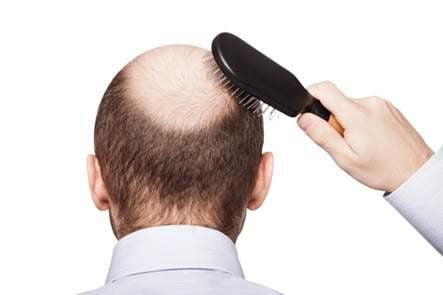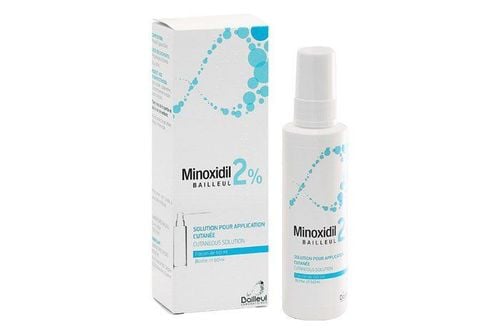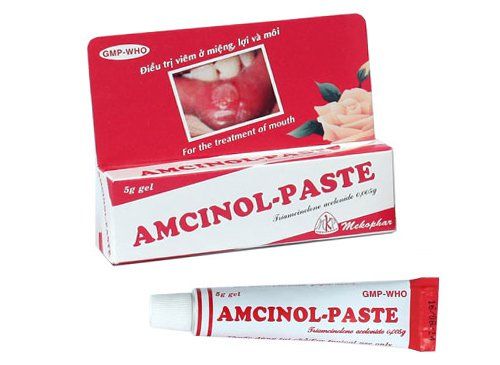This is an automatically translated article.
The article was professionally consulted with Specialist Doctor II Le Thanh Cam - Pediatrician - Pediatrics - Neonatology - Vinmec Danang International General Hospital.Hair loss is not uncommon in children and has many causes. There are many different types of hair loss in children, if not examined and treated early, it will affect the health, psychology and confidence of the child. Therefore, parents need to know information about the causes and types of hair loss in their children so that they can take their children to the doctor and treat them promptly.
1. Types of hair loss in children
1.1. Alopecia Areata Patchy hair loss (or coin-shaped alopecia) in children is a manifestation of an autoimmune disorder called Alopecia. If a child has this condition, the symptoms of the disease can be easily seen - hair loss in patches forming a smooth, rounded bald area, no signs of scaling or broken hair, eyelashes of the child. Children sometimes fall out and their nails appear pitted and brittle.So far, the exact cause of hair loss in children has not been found, but this is not a dangerous disease because most studies show that most children suffer from it. This condition will regrow hair on its own after a year or so.
If parents see that their baby has symptoms of this coin-shaped hair loss disease, they should quickly take the child to a medical facility for examination and treatment. Treatment will help prevent childhood patchy hair loss from progressing to Totalis - the complete disappearance or total loss of body hair.
1.2. Tinea Capitis is the most common cause of hair loss in children. It is a contagious fungal infection of the scalp that usually affects children between the ages of 3 and 14.
Some common symptoms of hair loss in children due to scalp fungus are:
Red circles appear on the scalp; The scalp feels itchy, dandruff also appears more; Appearance of round scales on the scalp; Hair falls out easily. This scalp fungal hair loss in children can be treated with antifungal creams or shampoos. Because this disease is contagious, parents need to avoid sharing pillows, combs and other objects that come in contact with their baby's scalp. If a child has signs of a fungal infection of the scalp, it is necessary to treat the child soon, to avoid thinning of the hair and scarring if the deep damage destroys the hair follicle.
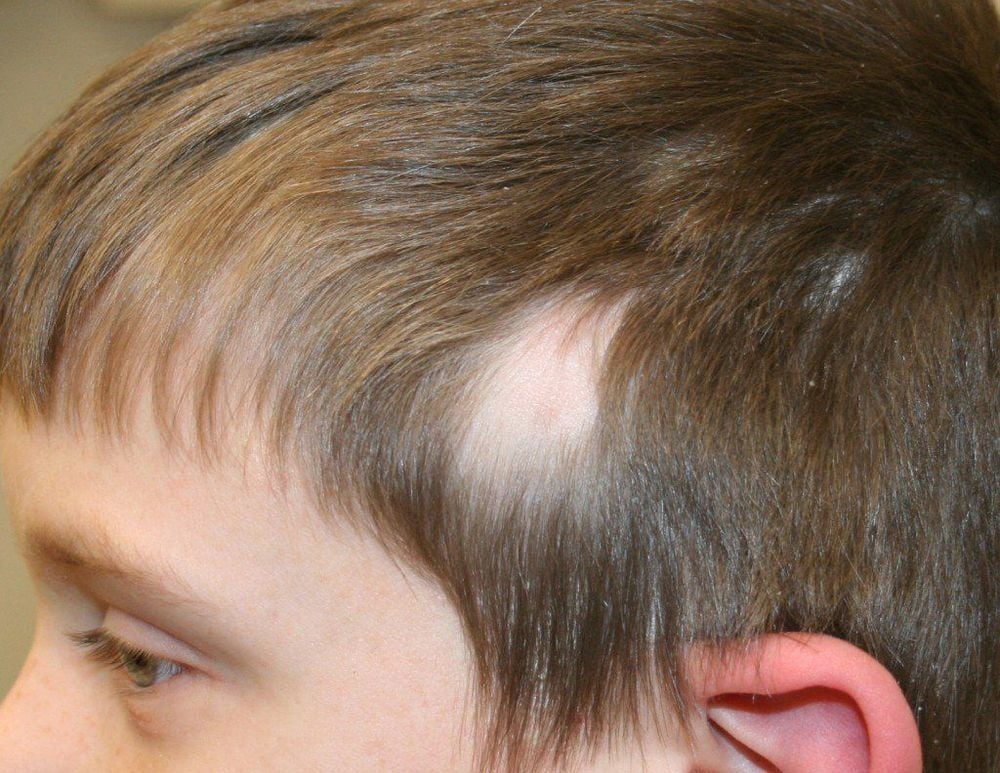
Usually the damage a child suffers from hair pulling addiction will be patches of hair loss at the temples and tops, asymmetrical and polymorphic. Accordingly, defects such as nail biting (onychophagia) or thumb sucking are common problems that can be accompanied.
1.4 TE Hair Loss in Children (Telogen Effluvium) TE Hair Loss is a fairly common condition in young children, it can be understood that at this stage the hair follicles are in the resting phase causing the hair to fall out. Usually after experiencing a fever or an operation, the child will contract this illness. Besides, stress is also the cause of TE-type hair loss in children. Because TE hair loss does not have many specific and obvious symptoms, if parents see their child's hair shedding a little every day, especially when the child was sick a few weeks ago, they can think of this condition. In addition, the accompanying weight loss is also a manifestation of the disease.
Unlike other types of childhood hair loss, TE hair loss has no specific treatment. However, you can provide your child with a nutritious diet and create a comfortable, stress-free living environment.
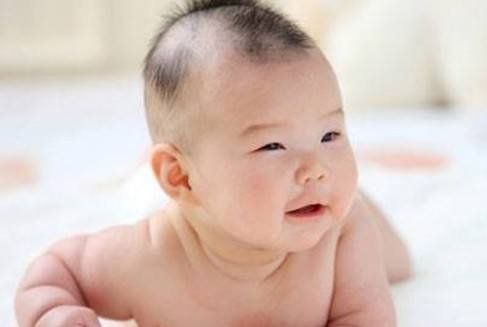
This is not a very serious condition, it usually happens due to genetics or fluctuations. of hormones. In addition, other medical conditions such as thyroid disease, cancer or diabetes can also cause hair loss in children.
1.6. Transient Neonatal Hair Loss Transient Neonatal Hair Loss Transient neonatal hair loss, also known as neonatal occipital alopecia, usually appears between 8 and 12 weeks postpartum and the prevalence of children is from 9 to 12%. This is a disease that mainly occurs in white children, so far the cause of the disease has not been determined.
Manifestations of transient alopecia areata in infants are bands of hair loss in the form of bands or ovals in the occipital region, clearly demarcated at the lower border of the lesion. Once detected, diagnosed and treated, baby hair will usually grow back in 4-8 months.
2. Help children overcome guilt because of hair loss
Most often, children with hair loss become embarrassed because of their illness, especially for children who are going to school because they are often teased by friends around. Therefore, in addition to treatment, families should encourage and comfort their children so that they can overcome the complex of hair loss.Parents and families can explain to their children why they are losing their hair as well as how to treat them to help them understand themselves better. Besides, parents can also choose to give their children accessories to cover their heads such as hats, scarves or let their children use wigs if they want.
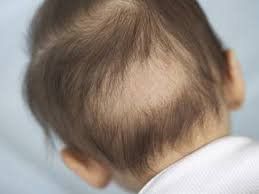
3. Some measures to help improve hair loss in children
Here are some measures to help improve hair loss as well as stimulate hair growth that parents can apply at home for their children:Coconut oil has the ability to clean as well as stimulate hair growth. mother use for baby; Make sure your child has a healthy diet with foods rich in vitamins A, C, E, iron and zinc; Vitamin B has the effect of helping to quickly regenerate lost hair follicles, so families can give their children vitamin B supplements every day according to the dosage allowed by the doctor. Avoid using chemicals with strong detergent ingredients on the hair. young; Help children form a habit of being gentle when washing, combing or drying their hair; Most types of hair loss in children can be effectively controlled and treated with appropriate methods. Therefore, if parents see that their children have signs of hair loss a lot, they should take their children to a reputable medical facility to promptly diagnose the exact cause of hair loss, thereby having a timely treatment plan. time and efficiency.
With many years of experience in examining and treating diseases in children, now the Pediatrics Department at Vinmec International General Hospital has become one of the major health care centers, capable of examining , screening and treatment of many specialized diseases in children. Therefore, if the child shows signs of hair loss, accompanied by a medical condition, parents can take the child to Vinmec International General Hospital to examine, find out the cause and receive support and advice from doctors.
Please dial HOTLINE for more information or register for an appointment HERE. Download MyVinmec app to make appointments faster and to manage your bookings easily.





